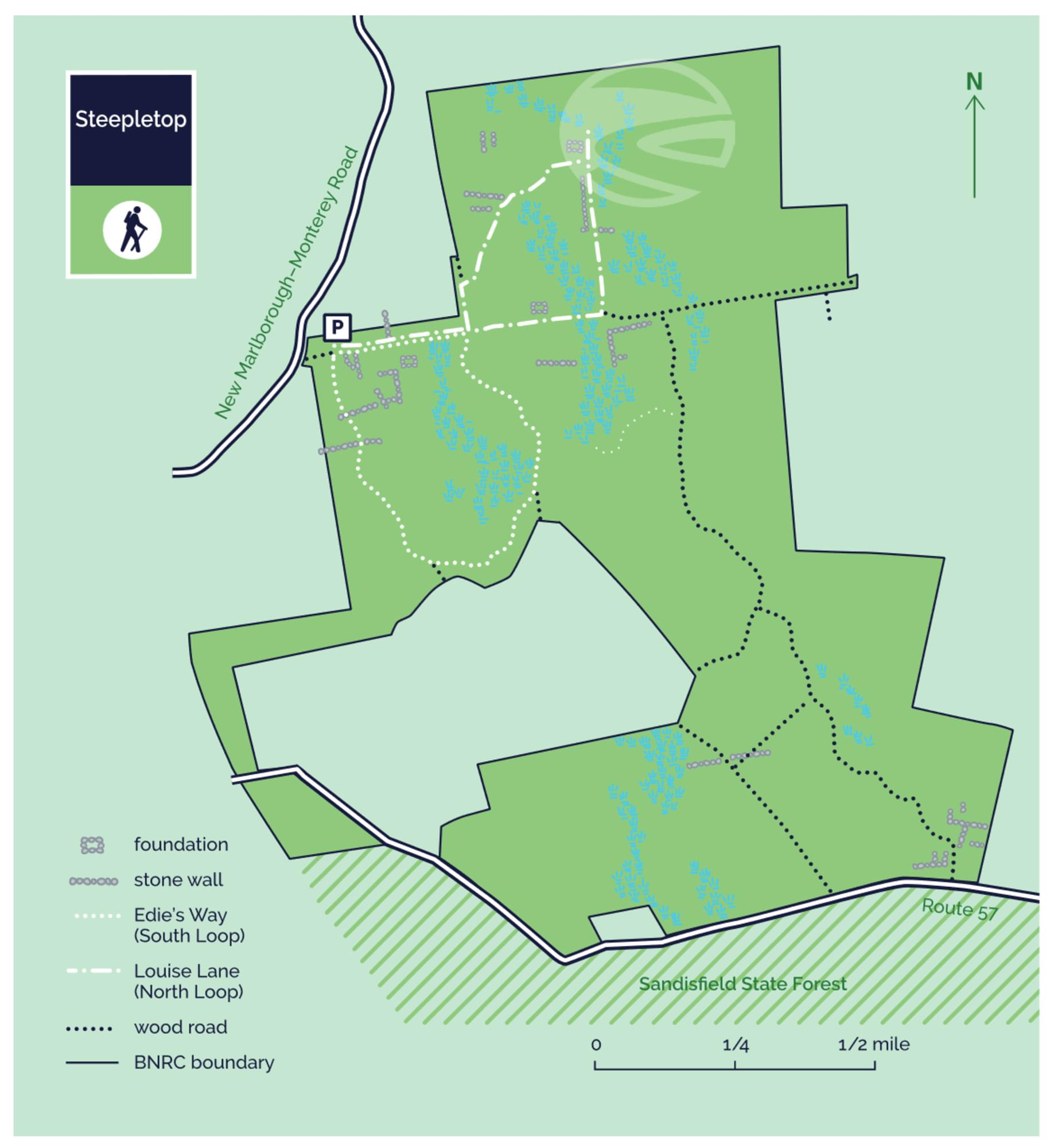Steepletop Reserve (BNRC)
Steepletop Reserve (BNRC)
Berkshire Natural Resources Council New Marlborough, Massachusetts 01230
Official WebsiteSteepletop Reserve map
About this Location
Steepletop’s 1,230 acres make it the Berkshire Natural Resources Council’s largest reserve. Its five miles of marked and maintained trails plus three miles of wood roads, all on easy grades, are ideal for hiking, bird-watching, hunting, snow-shoeing, and cross-country skiing. The reserve’s woods range from an unusual patch of old-growth forest to quite a young forest, managed for wildlife that require those habitats.
This land, and all of the present-day Berkshires, are the ancestral homeland of the Mohican people who were forcefully displaced to Wisconsin by European colonization. These lands continue to be of great significance to the Stockbridge-Munsee Mohican Nation today.
Steepletop was donated by the Devine family, long-time owners of the reserve and adjacent property. In addition to giving the reserve to the Berkshire Natural Resources Council, the family has ensured the conservation of nearly 5,000 contiguous acres located between the village centers of Monterey and New Marlboro. The name of the property reportedly harkens to a time of less dense forest growth when the New Marlboro church steeple was visible from this hillside.
In the property’s far southeast quadrant is a mixture of young and mature forests, managed for wildlife species that depend on the young forest habitat. At the far northwest is a small patch of forest with old-growth characteristics. It’s not a virgin forest, but it is unusually old. At the center of the reserve is Harmon Brook flowing from south to north through more than 100 acres of scattered wetland.
The varied habitats and sheer size of the reserve and contiguous protected areas attract a wide range of wildlife. Birders can look for, among others, American woodcocks. Hunters might encounter bears and white-tailed deer. Otter, beaver, and coyotes also inhabit the preserve.
Within the wooded area’s mix of conifers and hardwoods, two queens of the New England forest, white pines and black cherries, often stand next to each other in full growth. Different varieties of birch and maple as well as oaks, beech, and hemlock are also abundant. Look for cattails and wild cranberries in the wet areas.
The well-blazed trails, North and South Loops, take visitors past extensive stonewalls, near foundations, and over brook crossings. While the trails are not groomed for winter skiing, they and the wood roads are often wide enough for skating cross-country skiers as well as those using the classic technique. Winter visitors to the reserve can follow the tracks of many different species.
Features
Restrooms on site
Wheelchair accessible trail
Entrance fee
Content from Official Website
Last updated November 25, 2023
